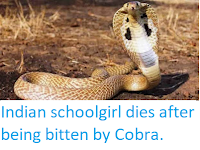Members of the Natricid Snake genus Trachischium are commonly known as Slender Snakes or Worm-eating Snakes. They are fossorial in nature (live underground in burrows) and are distributed in montane ranges of India, Nepal, Bhutan, China, Myanmar, and Bangladesh. The genus currently contains six species: Trachischium fuscum, Trachischium guentheri, Trachischium laeve, Trachischium monticola, Trachischium sushantai, and Trachischium tenuiceps. The Snakes of this genus are poorly studied, likely due to their fossorial nature; however, these are common elements of high-elevation herpetofaunal assemblages.
In a paper published in the journal Comptes Rendes Biologies on 19 November 2019, Harshal Bhosale of the Bombay Natural History Society, Gaurang Gowande of the Department of Biotechnology at Fergusson College, and the Annasaheb Kulkarni Department of Biodiversity at Abasaheb Garware College, and Zeeshan Mirza of the National Centre for Biological Sciences at the Tata Institute of Fundamental Research, describe a new species of Trachischium from Arunachal Pradesh State in India.
In the course of a herpetological investigation, Bhosale et al. visited Talle Valley Wildlife Sanctuary in Arunachal Pradesh, northeastern India, and collected three specimens of a Trachischium species that resembled Trachischium monticola in bearing 15 dorsal scale rows, but did differed from it in some aspects, primarily their colouration. In order to ascertain the identity of the specimens from Talle Valley, type material of Trachischium in the collection of the Natural History Museum in London, as well as non-type material in the collection of Bombay Natural History Society in Mumbai were examined. Based on our observations, the specimens from Talle valley appear to be a form that is distinct from Trachischium monticola and other congeners, and is therefore described as a new species.
The new species is named Trachischium apteii, in honour of Deepak Apte, the Director of the Bombay Natural History Society, a marine biologist and conservationist, for his contribution to conservation, and for his continued support to Harshal Bhosale and to the Arunachal Expedition, which led to the discovery of the new species.
The species was found during an expedition to Arunachal Pradesh which ran from 25 June 2019 to 5 August 2019, along with other members of the genus. The study was conducted under permits issued by the Forest Department of Arunachal Pradesh. Three specimens of the new genus were collected in the field by hand, were photographed, and later two specimens were euthanized within 24 hours of capture. The other specimen was released after recording scalation and other morphometric data and clipping a single scale for molecular work. The Snakes were found under logs during a daytime search. The individuals were likely seeking refuge under the logs during the day. Locals informed the scientific team that the Snakes have also been found while digging during non-monsoon seasons.
Trachischium apteii is a large-sized member of the genus, with the female specimen collected having a total length of 331 mm. The tail comprises 11-13% of the total length. Dorsal scales smooth and glossy, arranged in 15 rows throughout the body. The Snakes are dark brown to black with faint dorsal longitudinal lines, lacking yellow patch on the neck and the belly being yellowish.
See also...
The new species is named Trachischium apteii, in honour of Deepak Apte, the Director of the Bombay Natural History Society, a marine biologist and conservationist, for his contribution to conservation, and for his continued support to Harshal Bhosale and to the Arunachal Expedition, which led to the discovery of the new species.
The species was found during an expedition to Arunachal Pradesh which ran from 25 June 2019 to 5 August 2019, along with other members of the genus. The study was conducted under permits issued by the Forest Department of Arunachal Pradesh. Three specimens of the new genus were collected in the field by hand, were photographed, and later two specimens were euthanized within 24 hours of capture. The other specimen was released after recording scalation and other morphometric data and clipping a single scale for molecular work. The Snakes were found under logs during a daytime search. The individuals were likely seeking refuge under the logs during the day. Locals informed the scientific team that the Snakes have also been found while digging during non-monsoon seasons.
Trachischium apteii, holotype female specimen, BNHS 3550, in life. Bhosale et al. (2019).
Trachischium apteii is a large-sized member of the genus, with the female specimen collected having a total length of 331 mm. The tail comprises 11-13% of the total length. Dorsal scales smooth and glossy, arranged in 15 rows throughout the body. The Snakes are dark brown to black with faint dorsal longitudinal lines, lacking yellow patch on the neck and the belly being yellowish.
See also...
Follow Sciency Thoughts on Facebook.







